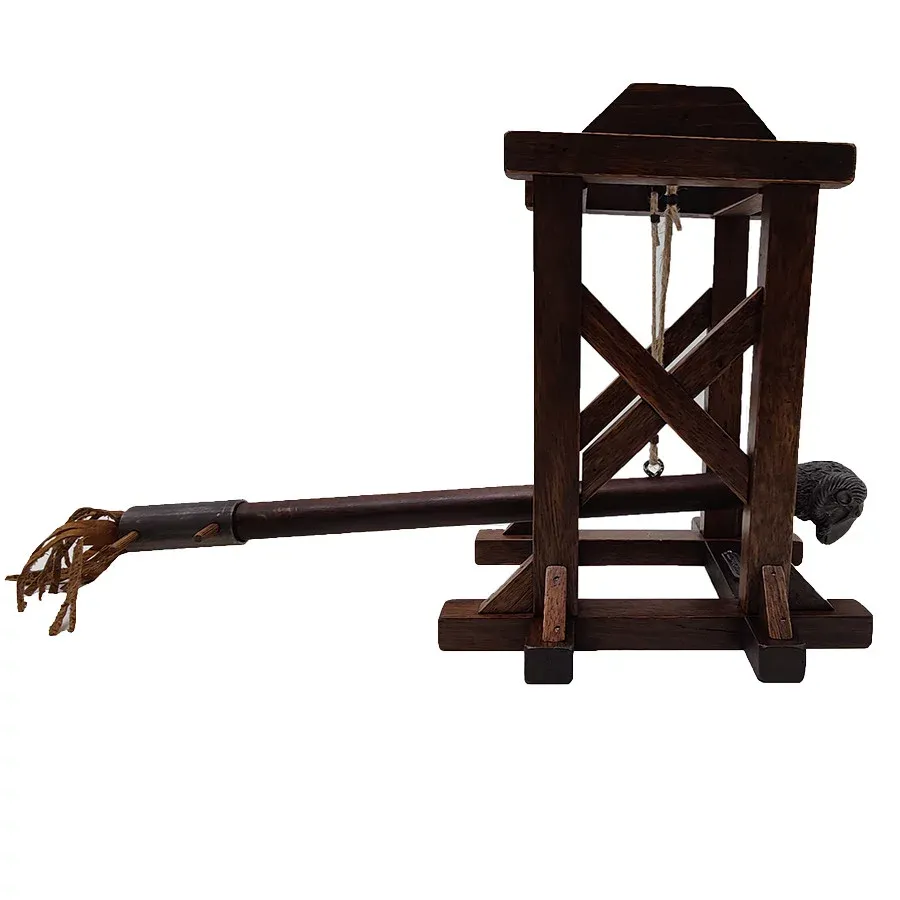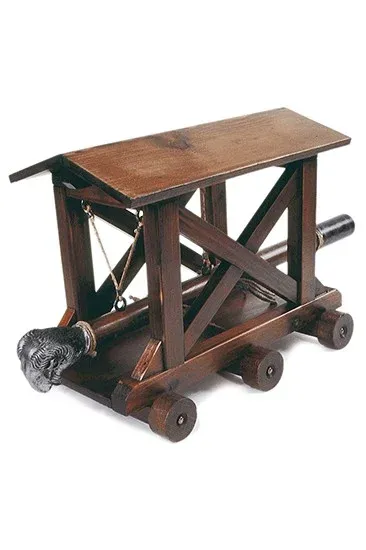Shopping Cart
There are no more items in your cart
What is a Ram?
When discussing sieges and the complex tactics of ancient and medieval warfare, the battering ram stands out as an iconic and fundamental tool. This powerful siege instrument played a crucial role in military history, employed to dismantle the solid defenses of fortifications and castles. Below, we explore its characteristics, history, and the context in which it was used.
Characteristics of the Battering Ram
- Origin and Design: The term "battering ram" comes from the Latin aries, meaning "ram." This is because originally a ram's head was placed at the tip of the battering ram, thereby increasing the damage inflicted on the target through the animal's horns. The main structure of a battering ram consisted of a long, heavy beam, often reinforced with metal at the end. This design allowed a team of soldiers to handle it and apply force to the target.
- Operation: The operation of the battering ram required precise coordination among soldiers, who would repeatedly strike it against doors, walls, or other barriers. The goal was to weaken the defenses of an enemy fortress until significant breaches were opened.

Evolution and Improvements
- Over time, battering rams were enhanced with bronze or iron coverings to increase their effectiveness. They also included leather protections to counter incendiary attacks from fortress defenders. Defense tactics evolved to incorporate obstructing battering rams before impact.
History of the Battering Ram
- Ancient Origins: The battering ram has its roots in ancient Mesopotamia, around 3500 B.C., being one of the oldest recorded siege tools. It was adopted and adapted by civilizations such as the Greeks and Romans, who developed massive structures to amplify the battering ram's impact.

Evolution Over Time
- During the Middle Ages, European armies perfected the design of the battering ram by adding protective covers and metal reinforcements against boiling oil and projectile attacks. Even with the advancement of siege technology, the battering ram remained relevant until new tactics and armaments made it obsolete.
Use in Sieges
- Siege Tactics: Soldiers used the battering ram to strike repeatedly, weakening defenses until penetrating enemy fortifications. To protect those operating the battering ram, structures such as siege towers and tortoises were built to provide defense against attacks from above the walls.
Medieval Context: Fixed and Mobile Rams
- Fixed Rams: These were static structures focused on the constant use of inertia to destroy doors or walls.
- Mobile Rams: They offered greater flexibility on the battlefield by being mounted on a rolling frame or using a sling to facilitate retreat after impact.
| Type of Battering Ram | Main Features |
| Fixed Ram | Maintained in one place, requiring coordination of soldiers to optimize its continuous impact. |
| Mobile Ram | Mounted on wheels, allowing mobility to advance or retreat after the strike. |
A battering ram is more than just a simple demolition tool; it is a testament to ingenuity and strategy in ancient warfare machinery. Although its use has become history, its impact on the military field makes it an important chapter within siege tactics.




























